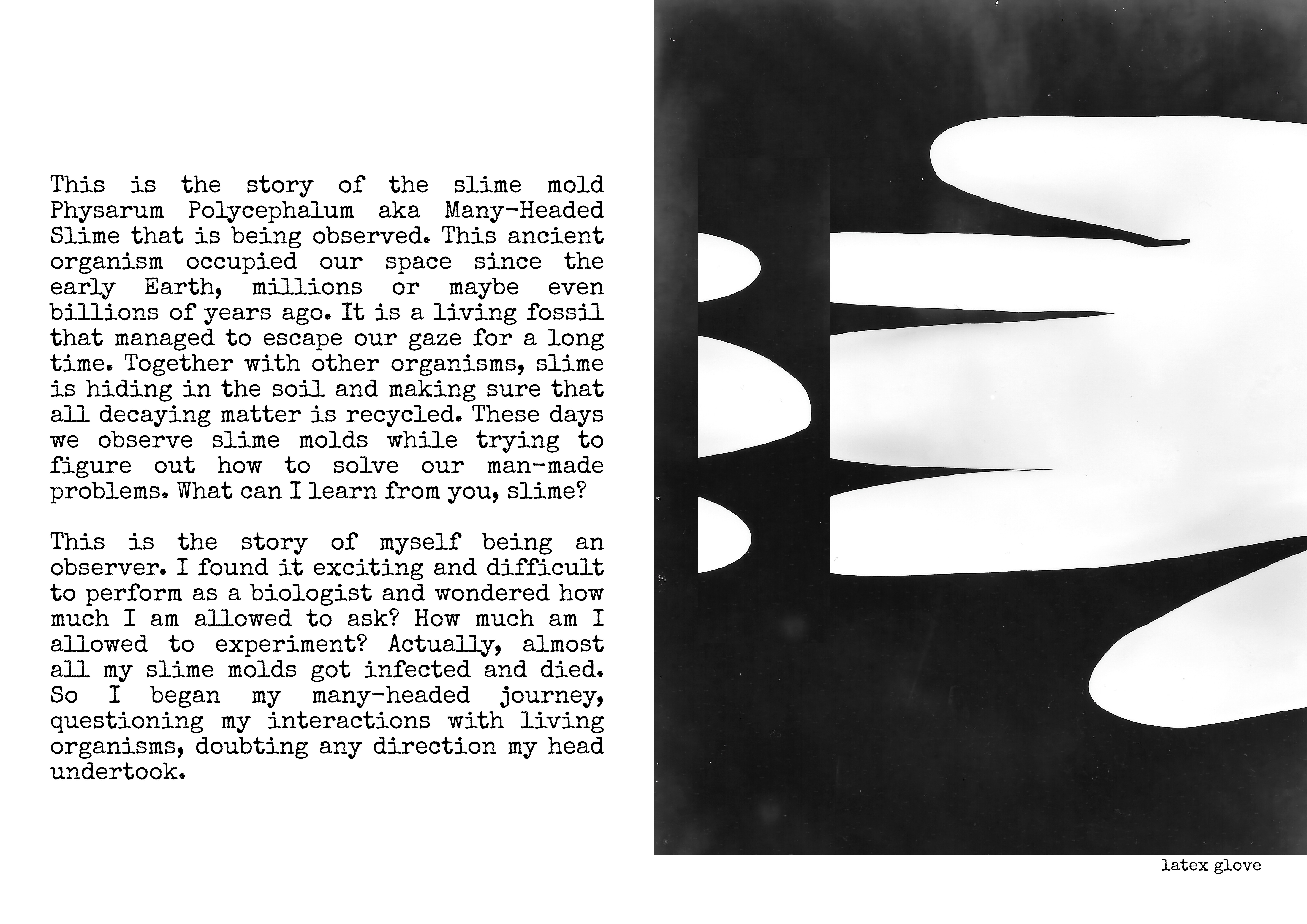Working with
2021
During my time at MIVC and on my journey towards sustainable darkroom practice, I have been thinking about the monstrosities I have created. I have questioned my position as an artist and my right to use the organisms in order to re-invent or explore their materiality for the future darkroom. My mind, as well as my gut feeling, got absorbed in worries and possibilities. I envision there is a huge potential in working with growing cultures, bacteria, and plants that could potentially substitute heavy metals, animal tissue, toxic chemicals or remediate darkroom waters. Despite the fact it sounds fascinating, it is extremely troubling too. Do I only continue to abuse, appropriate and extract different landscapes and bodies? What is the role of the photography practitioner when re-making the darkroom experience?
I have treated sponge-like kombucha bodies with silver nitrate and cyanotype solution to watch them absorb, be filled up by the chemicals and create images. I have been lighting the torch on the light-sensitive body of a slime mold to observe its path, to only realise how I command my power over this organism. As a way to re-establish my relationship with the yellow Many-headed slime, I offered it my tissue – skin, nails and hair – and watched it be sniffed, tasted, engulfed, and immersed. I wrote a storytelling zine, using images of tools that I (and laboratorians) use when working with biomatter. It became my way of attuning, and figuring out that the sustainable darkroom is a practice of establishing relationships in the first place.
![]()
![]()
Silver nitrate on the Kombucha scoby laid over the glass, self-portrait, 2021 (March 2021 vs January 2022).
I have treated sponge-like kombucha bodies with silver nitrate and cyanotype solution to watch them absorb, be filled up by the chemicals and create images. I have been lighting the torch on the light-sensitive body of a slime mold to observe its path, to only realise how I command my power over this organism. As a way to re-establish my relationship with the yellow Many-headed slime, I offered it my tissue – skin, nails and hair – and watched it be sniffed, tasted, engulfed, and immersed. I wrote a storytelling zine, using images of tools that I (and laboratorians) use when working with biomatter. It became my way of attuning, and figuring out that the sustainable darkroom is a practice of establishing relationships in the first place.

Silver nitrate on the Kombucha scoby laid over the glass, self-portrait, 2021 (March 2021 vs January 2022).


Silver nitrate and cyanotype on Kombucha scoby, 2021.





From the zine ‘How I became many-headed’, 2021.